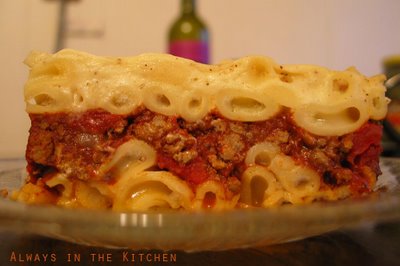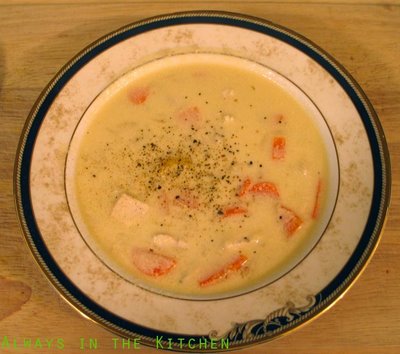Last year, I had a Cinco de Mayo party; this year, I am not so organized. Cinco de Mayo commemorates the victory of the drastically outnumbered Mexicans over the Napoleonic army at
The Battle Of Puebla in 1862. Although it is primarily a regional holiday in the state of Puebla, it has some recognition throughout Mexico, and in many American cities, too. It is
not Mexico's Independence Day (September 16), but it is a celebration in a similar spirit.
While it may not be Mexico's Independence Day, it holds great significance in the establishment of a national identity for many Mexicans, and as such is perfectly in keeping with my interest in the food of cultural celebrations.
While I may not have managed any particular arrangments for this year, I have been cooking a lot of Mexican food lately, including
Mayan-style black bean soup and these adorable little tostadas made of Mexican adobo of pork shoulder, some awesome spinach tortillas made by a local factory (you can actually taste the spinach!), a some feisty green salsa using
Brandon's recipe (of
Orangette-fame). The pork shoulder took an impressive three hours of simmering in first water and then a brick-coloured adobo sauce made with pureed ancho chiles, onions, garlic, and surprisingly minimal dried spices, such as cumin and oregano. This is all about the chiles, but it is not a particularly hot dish. Anchos are, as Bobby Flay likes to say, "like spicy raisins." There's an underlying sweetness that sets off the mild heat of the pepper, and contrasts beautifully in this recipe against the vinegar-edge of the adobo.

I'm already on the record as saying that
miniature = cute, and these are no exception. The first night I served them, we left the tortillas soft (but warm) and adorned them with sliced peppers and a smear of refried beans, and the second night, I crisped the tortillas in a cast iron frying pan until blistered with gold and served them with just the salsa and a little cilantro. The tortillas are about a finger's-length in diameter, making these just a few quick bites each. You could make even tinier ones, just one bite each, and I probably would if I were serving them as party snacks. In fact, I might just have to have a party so that I can do so!
Red Adobo of Pork
(Adobo Rojo de Cerdo)
adapted from the excellent
New Complete Book of Mexican Cooking by Elisabeth Lambert Ortiz
7 ancho chilies, toasted, de-stemmed and de-seeded, torn into pieces and covered with warm water
3 lbs. boneless pork shoulder, cut into one-inch cubes
1 onion, peeled, halved, and stuck with 2 cloves
1 onion, peeled and diced
3 cloves of garlic, chopped
1/2 teaspoon ground oregano
1/2 teaspoon ground cumin
black pepper
1/2 teaspoon sugar
398 ml./14 0z. canned, diced tomatoes
1/4 cup cider vinegar
1 tablespoon lard, bacon drippings or corn oil
Salt
Black pepper
Start with the pork. In a heavy dutch oven, place the pork and the clove-stuck onion with enough lightly salted water to just cover. Bring to a simmer, reduce the heat to a very gentle heat, and cook (covered) for 2 hours. The meat will be very tender. In the final hour of the meat simmering, start the prep for the sauce.
Let the peppers rest in their warm bath for 20 - 30 minutes, until thoroughly soft. Remove the peppers from their water and place them in a food processor, along with the chopped onion, garlic, cumin, oregano, sugar and tomatoes. Process until you have a fairly smooth, heavy puree. In a heavy skillet, heat the lard, and add the puree. Saute the mixture over a lowheat, stirring constantly, for about five minutes.
When the pork has finished simmering, remove the pork pieces from the liquid, which has become a lovely pork-stock. Strain the stock, and reserve one cup. Freeze the rest for the next time you want to make black bean soup.
Thin the ancho mixture with the reserved pork stock, and transfer the mixture to your now-empty dutch oven. Add the pork back to the pot, add the vinegar, and stir well. Simmer uncovered over low to medium-low heat. The sauce will finish cooking and become quite thick. Taste the sauce, and add salt and black pepper as needed.
Serves 6. Leftovers make awesome burritos with beans, grated cheese, and salsa.
 I like sunny weather as much as the next person, really, but I am also one of those who suffers easily in the heat. None-the-less, I find myself drawn to flavours and staples of hot-weather cuisine. Chicken, that staple that happily accepts all manner of rough-treatment from filleting to pan-frying, braising, poaching, roasting, grilling, or skewering (and surely more that I've left out) becomes a particularly useful canvas for taking your tastebuds on a journey.
I like sunny weather as much as the next person, really, but I am also one of those who suffers easily in the heat. None-the-less, I find myself drawn to flavours and staples of hot-weather cuisine. Chicken, that staple that happily accepts all manner of rough-treatment from filleting to pan-frying, braising, poaching, roasting, grilling, or skewering (and surely more that I've left out) becomes a particularly useful canvas for taking your tastebuds on a journey.















